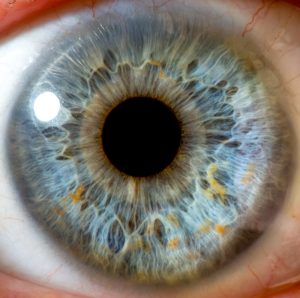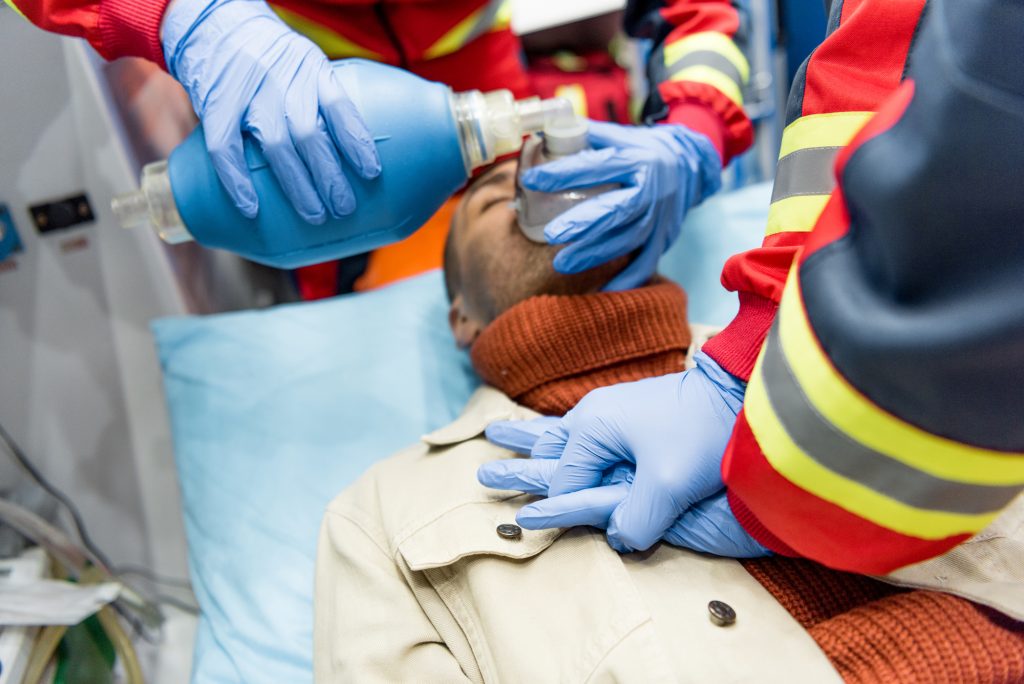 Written by Jane Carter
Written by Jane Carter
Telehealth nutrition referral pathways enhance access to dietitians, enabling patients to make meaningful dietary changes without the need for in-person visits. By establishing an efficient workflow, care managers and clinicians can streamline referrals, enhance patient engagement, and support improved health outcomes.
From determining who qualifies for a referral to selecting the right virtual platform, each step requires careful consideration and planning.
Here’s a comprehensive overview of what’s involved. You’ll learn how to build a clear pathway that simplifies the process while maintaining high standards of care.
Establishing Screening Criteria for Nutrition Referrals
Screening ensures the right patients receive nutrition support. Start by identifying common health conditions that benefit from dietary intervention, such as diabetes, hypertension, or malnutrition. Use standardized screening tools like the Malnutrition Universal Screening Tool (MUST) to flag nutritional risk factors, particularly in high-risk patients.
Collaborate with clinicians to define referral thresholds. For example, should patients with a BMI above 30 automatically qualify, or only if they have coexisting conditions? Align criteria with evidence-based guidelines.
Incorporate these into electronic health record systems to automatically prompt referrals when specific conditions are met. This reduces guesswork and improves consistency across providers.
Finally, ensure all team members understand and apply these criteria uniformly. A simple decision tree or quick-reference guide can help everyone stay on track without delays in care.
This step not only saves time but also ensures patients most in need have access to virtual dietitian services promptly.
Simplifying the Patient Consent Process
Clear communication facilitates the process of obtaining patient consent. Begin by explaining how virtual dietitian referrals work, emphasizing privacy and convenience. Use simple language to reassure patients about secure platforms and confidential sessions.
Offer a brief, pre-written script for clinicians that outlines the benefits of nutrition counseling. For example: “A dietitian can provide personalized advice to help you manage your condition more effectively.”
Streamline paperwork by integrating digital consent forms into your referral system. Patients can review and sign electronically during their visit or through a secure patient portal.
For those who are less tech-savvy, keep printed versions on hand as backups; however, ensure that all forms are concise and free of legal jargon.
Following up with an email summary or FAQ sheet reinforces understanding while building trust in the process. These steps ensure smoother transitions to telehealth care without adding extra burdens for patients or staff members.
Selecting and Integrating a Telehealth Platform for Referrals
Select a platform that facilitates seamless referrals and integrates seamlessly with your existing workflows. Look for features like HIPAA compliance, secure messaging, video capabilities, and scheduling tools. Platforms such as Doxy.me or Zoom for Healthcare are commonly used in telehealth settings.
Ensure the system integrates smoothly with your electronic health records (EHR) to prevent data entry duplication. Integration enables providers to track referrals, view updates from dietitians, and streamline billing processes without needing to toggle between systems.
Involve IT staff early to set up connections securely while minimizing downtime during implementation. Training sessions can help clinicians feel confident in using the platform before it is widely launched.
Patient-friendly interfaces also matter, so test usability from their perspective by checking ease of access and compatibility across devices. This makes virtual visits convenient for all users while reducing missed appointments due to technical issues or confusion about how the platform works effectively.
Documentation Best Practices to Streamline Workflow
Accurate documentation is essential for effective nutrition referrals. Begin by standardizing templates within your EHR system to capture necessary details like the reason for referral, patient history, and desired outcomes. This ensures consistency across all cases. If you’re using a cloud-based EHR, this will be simpler.
Use dropdown menus or checkboxes for common conditions to save time during data entry. Free-text fields should only be used when a specific context is required.
Set up automatic notifications that inform care teams when dietitians complete initial assessments or follow-ups. This keeps everyone informed without extra manual tracking.
Document feedback from dietitians directly into the patient’s record instead of maintaining separate logs. Consolidating information prevents miscommunication and enables effective guidance of ongoing care decisions.
Regular audits can identify gaps in documentation processes, allowing for timely corrections while maintaining compliance with regulatory standards, such as HIPAA. A well-documented workflow not only supports continuity of care but also reduces unnecessary administrative burdens on staff members on a daily basis.
Evaluating Success in Nutrition Counseling
Outcome tracking measures the effectiveness of your referral pathway. Start by defining clear metrics, such as improvements in lab results (e.g., A1C levels for diabetes), changes in weight, or reductions in medication use. Include patient-reported outcomes, such as increased energy or improved meal planning skills.
Integrate these metrics into follow-up appointments and dietitian feedback reports to inform ongoing care. Use EHR systems to track progress over time, creating visual trends that clinicians can easily review.
Set specific timelines for reassessments. 30 days, 90 days, and six months post-referral are common benchmarks. These intervals provide insight into both short-term wins and long-term impact.
Patient satisfaction surveys provide an additional layer of valuable data. Ask patients about their experience with virtual sessions to refine the process further.
Tracking results doesn’t just measure success; it helps justify the value of telehealth nutrition services to stakeholders while ensuring continuous improvement in patient care delivery systems.
Collaboration Agreements with Virtual Dietitian Services
Partnering with reliable virtual dietitian providers ensures patients receive expert care. Start by researching services that specialize in your patient population, whether it’s chronic disease management or preventive care. Look for certifications, testimonials, and compliant platforms to ensure the quality of the service.
Draft collaboration agreements that detail the responsibilities of both parties. These should outline referral procedures, expected response times, documentation practices, and communication protocols between your team and the dietitians.
It’s now easy to find registered dietitians online which means patients can access help quickly when partnerships are well-structured. Offer flexibility while maintaining clear expectations about service standards.
Establish a feedback loop where providers regularly share progress reports on referred patients. This enhances continuity of care while identifying areas for adjustment in the partnership as needed.
Strong collaborations save time for clinicians and simplify transitions into telehealth nutrition support systems, benefiting everyone involved, from staff to patients themselves.
Educating Patients About the Benefits of Virtual Dietitians
Helping patients understand the value of virtual dietitian services encourages them to engage. Begin by addressing common questions during consultations, including what to expect, how sessions work, and why the approach is effective. Highlight convenience as a key advantage, as appointments can be conducted from home without the need for travel.
Use relatable examples to illustrate benefits. For instance: “A dietitian can help you adjust your meals for better blood sugar control or create easy meal plans based on foods you already enjoy.”
Provide patients with accessible materials, such as brochures or digital handouts, that outline the role of dietitians and share success stories from others with similar conditions.
Ensure staff are equipped with simple scripts to recommend referrals during routine visits confidently. Emphasize privacy protections for telehealth platforms.
Ongoing reminders through follow-up calls or patient portals reinforce education while boosting participation rates in nutrition counseling programs designed for long-term health improvements.
Addressing Common Barriers to Telehealth Referral Adoption
Patients and providers may face barriers when adopting telehealth referrals, but these can be resolved with practical solutions. For patients, concerns about technology or internet access are common. Offer step-by-step guides on using the platform, and consider scheduling a test session for those unfamiliar with virtual tools.
Language barriers also arise in diverse populations. Partner with services offering multilingual dietitians or provide translation support during sessions to ensure understanding.
For clinicians hesitant to adopt new workflows, offer hands-on training that demonstrates time-saving features of referral systems. Highlight examples of improved patient outcomes from other practices to build confidence and credibility.
Financial concerns, such as insurance coverage for telehealth nutrition, should also be addressed early by confirming reimbursements under state policies or federal regulations.
By anticipating these challenges upfront and implementing targeted strategies, both staff and patients will feel more confident embracing telehealth as part of their care journey.
Automating Referral Workflows for Greater Efficiency
Automation simplifies the referral process, saving time and reducing errors. Start by integrating your EHR system with telehealth platforms to enable automatic triggers for referrals based on pre-set criteria, such as lab results or flagged screening tools.
Set up referral templates within your software to standardize information shared with dietitians. This ensures that every referral includes key details, such as patient history, current medications, and goals.
Automated appointment reminders sent via email or text help patients stay engaged while minimizing missed sessions. Select systems that track scheduling status, allowing staff to monitor progress without requiring manual follow-ups.
Workflow dashboards give care managers a real-time overview of pending referrals and outcomes at a glance. Use these to identify bottlenecks quickly and make data-driven adjustments. Also consider how AI can enhance this aspect of your operations, and consider adopting it as part of your wider patient portal.
By leveraging automation in daily operations, clinics streamline communication between teams while enhancing efficiency in delivering telehealth nutrition services that are consistent and reliable.
The Bottom Line
Building a telehealth nutrition referral pathway ensures patients receive accessible, personalized dietary care that fits into their routines. Thoughtful planning at each stage, from screening to outcome tracking, creates a seamless process.
When supported by automation, collaboration agreements, and patient education, these workflows become efficient and impactful. Both clinicians and patients benefit from the streamlined experience.
Investing time upfront to design an effective pathway improves long-term outcomes for your practice while empowering patients to take control of their health.
Author Bio
Jane Carter is a healthcare writer specializing in telehealth innovation and patient-centered care strategies. With over a decade of experience in health communications, she focuses on creating practical resources that help clinicians improve access to nutrition and wellness services.
Please also review AIHCP’s Health Care Life Coach Certification and see if it meets your academic and professional goals. These programs are online and independent study and open to qualified professionals seeking a four year certification

 Written by Veronica Turner
Written by Veronica Turner Written by Sam Darwin
Written by Sam Darwin